A great exercise I use frequently in end-stage rehabilitation of knee and hip injuries, as well as general cardiovascular fitness, is rowing. Almost every gym has a handful of rowing machines available, which means after a quick training session with my clients, they can replicate the exercises in their own gyms or homes with relative ease.
As with any exercise, proper form is imperative to get the most out of your rowing session and reduce the risk of injury. I invited former scull and stroke-side sweep rower Eoin O’Murchu to PhysioMotion’s clinic to impart his knowledge of technique.
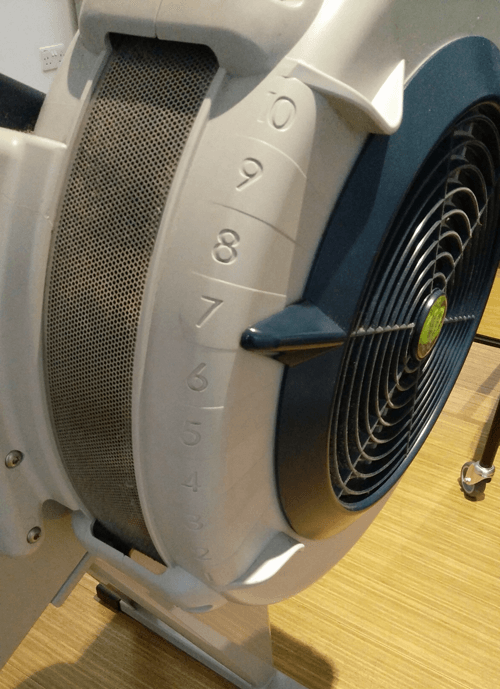
Ergometric rowers are ideal for individuals training and also for coaches wanting to observe and correct some components of the form. Too often, the average gym-goer doesn’t consider form. Eoin states while climbing into the seat of the Concept2 Rower, “They jump in, churn out their 25-minute warm-up looking like a rag-doll, which can unfortunately result in injuries and muscle strains.” Eoin has been rowing for the past 10 years for a number of regional and University clubs in Dublin.
Eoin goes on to discuss the drag-coefficient settings on the side of the Ergo trainer, quite frequently misinterpreted by gym-goers as “resistance”, “Most high-quality Ergo trainers can digitally determine what level of drag is imparted on your proverbial ‘boat’; the higher the setting (1-10), the higher the drag imparted while rowing. Level 3 is the normal drag a sleek racing shell will encounter in non-turbulent waters. Think of 7+ as a wide row boat on the Serpentine on a choppy day. Theoretically, lower drags have an aerobic exercise bias, and higher drags have a strengthening bias, but drag shouldn’t be considered alone.”
Ultimately, it isn’t the drag which determines how difficult your session will be, it’s how hard you work your legs on both power and cadence. This is most accurately shown by a combination of both stroke rate and 500m splits. “You can grind out all manner of 500m split times in any stroke rate between 18-44 s/min, therefore it’s difficult to establish how hard you’ve worked using one of these measurements in isolation”, Eoin explains.
He slides the dial to 4, grabs the handle and begins to flow through a few strokes. “Some of the most efficient rowers are the tallest – they have the longest stroke length and generate most power from longer and larger muscle groups, but without proper form, it doesn’t mean jack. Good form should appear fluid – no jarring, no straining or overreaching – just gliding back and forth in a set cadence, like a metronome.” As he’s rowing, he explains the 4 components of a stroke: catch, drive, finish, recovery (shown in the 4 images below).
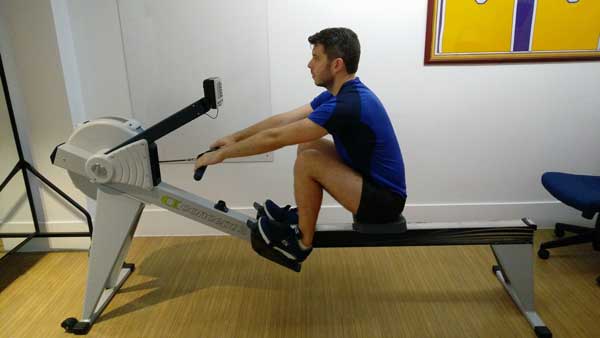
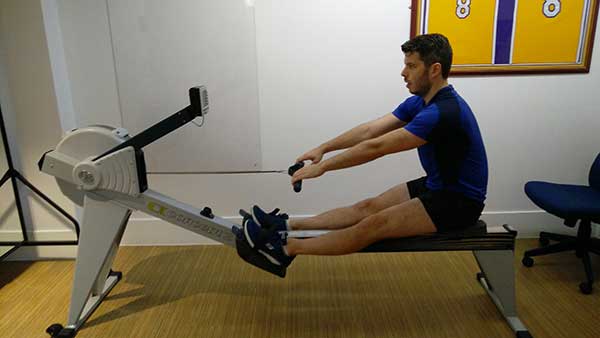
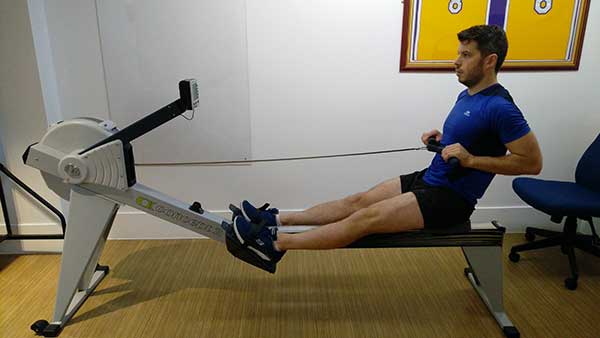
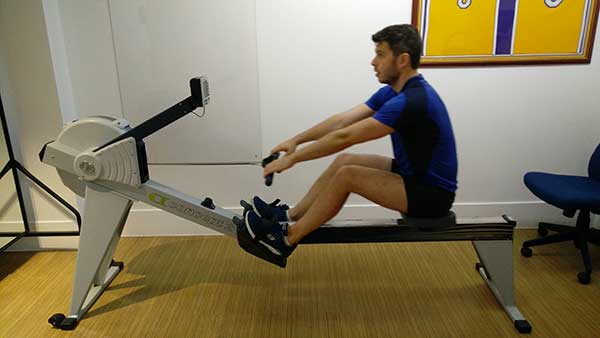
Catch – The point at which the oar enters the water, sat closest to the front of the Ergo with hips and knees fully flexed with back in a neutral position.
Drive – When the legs drive and extend through the stroke, keeping back and arms straight throughout the pull-through.
Finish – Once legs straighten, a gentle lean backwards at the hips of 10-20 degrees while the arms bend keeping elbows tucked in, allowing the handle of the Ergo to “kiss” the bottom of the sternum.
Recovery – The arms reach out, the body returns to upright position, then the legs follow the arms in a controlled bend, returning the slide back to the start catch position.
The most common cause of injuries during rowing, both on and off water is poor stroke technique. Frequently, you can see individuals over-reaching forward for the catch or leaning too far back at the finish, as shown in the pictures below.
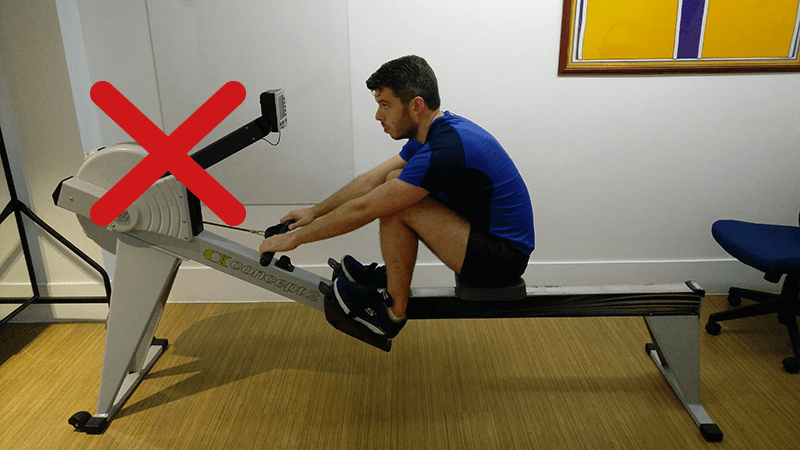
The back is too curved forward, with Eoin reaching forward too far for the stroke.
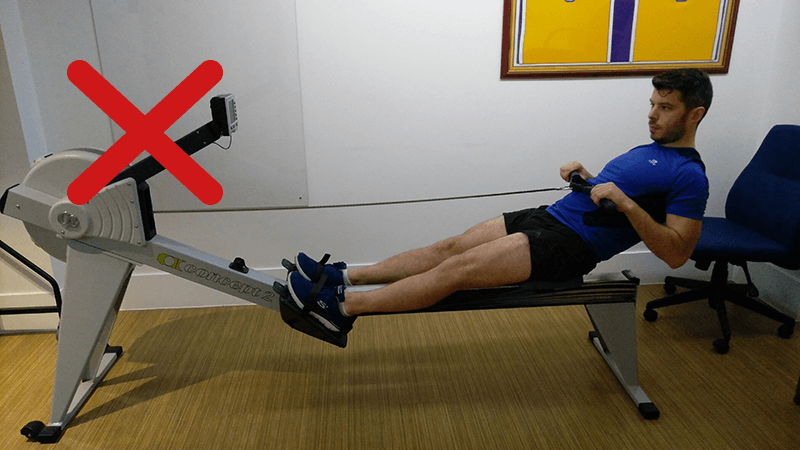
Leaning too far backwards, in an attempt to generate more power.
Poor postures like these put excessive strain on the back muscles and hamstrings, the two most prolifically injured muscles groups throughout the sport. Correct form, sufficient warm-up and flexibility are the key to preventing the strains to these groups. Warm-ups and flexibility are easy to correct, with gradual introduction of intensity and a proper stretching routine following your rowing session. However, correcting form is more difficult. There are rigorous observation sessions available with slo-mo video analysis from professional coaches to critique minimal fluctuations in their rowing technique, but Eoin reveals two easy tips to see how efficient your rowing technique actually is on your own in a gym setting.
By having a mirror in front of you, you should always be able to make eye contact with yourself – if your head is bobbing up and down, or your eyes drop below the top of the digital display or fan, you aren’t sitting tall enough.
Eoin also points out that some rowers use the toe straps to use their feet to pull themselves back into their slide. They aren’t holding true technique: ‚”You need explosive power for the pull of the stroke, which reduces as your legs extend, with just a relatively light pull on the arms. It should be 80% legs, 20% arms. Think of it like a sharp power spike on a graph, which gradually tapers off until the recovery component. If you take off the straps and you fire yourself off the end of the slide, something isn’t right.”
There are countless components of a rowing stroke which can be assessed and refined, however these few tips should improve your workout and rowing efficiency.